"Nutrition bars" were first concocted in the mid-20th century in the form of the granola bar, a novelty of prolific inventor Stanley Mason (the man behind other such "ordinary" modern conveniences as the squeezable ketchup bottle and dental floss dispensers). Since then, these on-the-go foods have turned into neatly wrapped bundles of food manufacturers' joy: cheap rice puffs glazed in artificial flavors and color, pumped full of sugar, soy and laboratory created vitamins and slapped with impressive price tags. With some nutrition bars containing 28 tongue-twisting ingredients, this is one item that is truly best avoided at the health food store. Instead try these delicious homemade superfood bars, combining sublimely sweet organic coconut, cocoa and dried fruit, with the pleasing crunch of soaked walnuts, almonds, pumpkin and sunflower seeds.
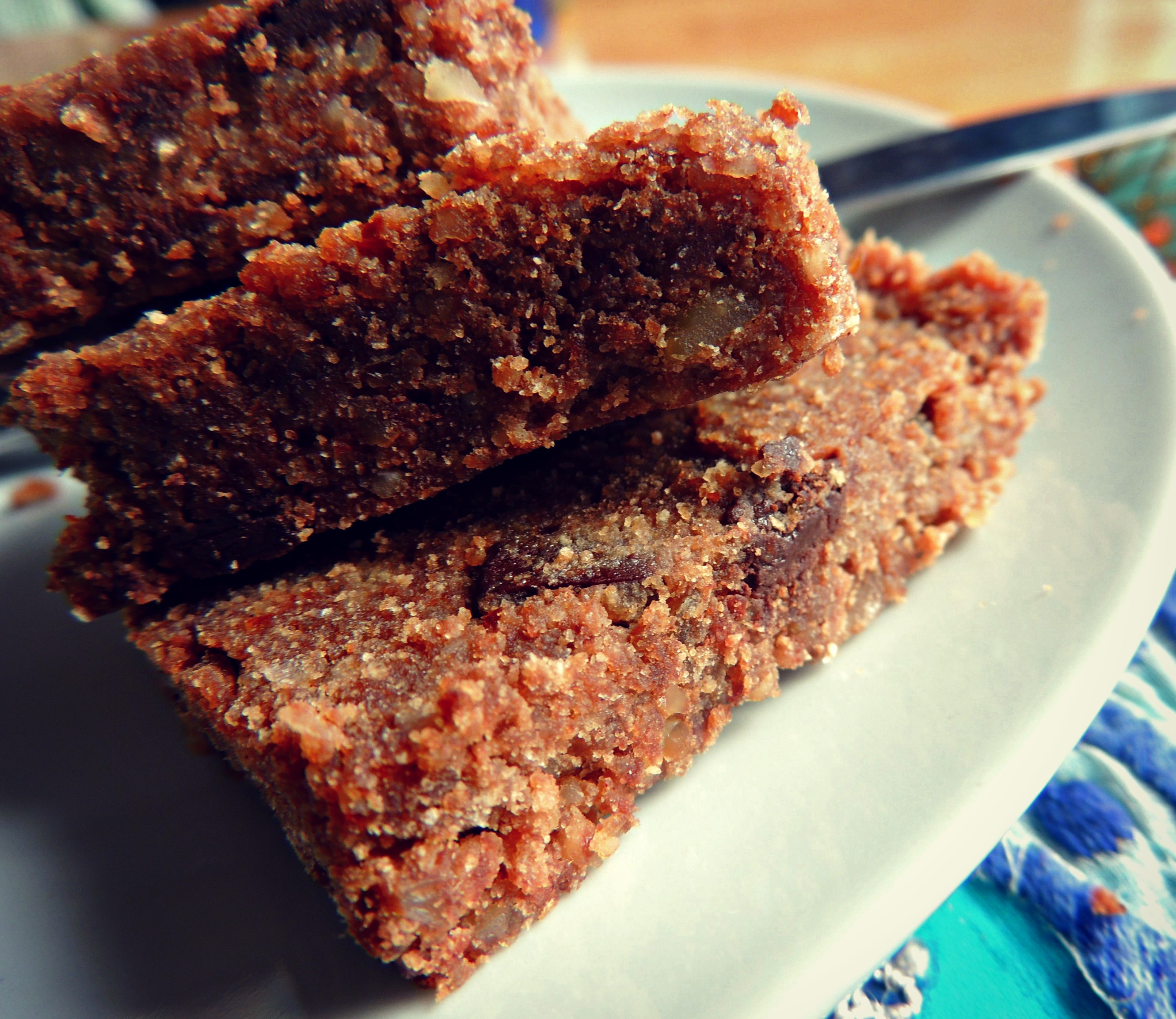
6 Interesting Packaged Food Facts
Just when you think you've got navigating the grocery store down, there is always a little something to surprise you...and snack foods like nutrition bars are some of the worst offenders.
1. Puffed cereals can promote toxicity and malnutrition. Modern cereals, such as those found in cartooned boxes or processed into snack bars, are made by a process called extrusion. In this method, grains are soaked in water, blended into a slurry and forced at high temperature and pressure into pleasant littles O's or shreds or flakes. These fragments are then coated in cheap oils and sugars to elicit a nice crunchy texture and toasted color. Yet, in addition to denaturing fatty acids, vitamins and minerals, this processes modifies the molecular structure of the proteins to create toxins. In laboratory studies, these cereals led to symptoms of malnourishment and toxicity in rats more quickly than when subjects were fed cardboard and water.
2. Not all nasty trans fats are labeled. In January 2006, the FDA mandated that all packaged foods label health-compromising trans fats on the nutrition label. However the loophole in this scheme is that if there are less than 0.5 grams of trans fat per serving, manufacturers are able to claim "contains zero trans fats" or a footnote stating "not a significant source of trans fats. Ingredient listings such as shortening or partially hydrogenated vegetable oil usually indicate trans fats.
3. US nutrition bars contain ingredients outlawed in other countries. Take for example Red 40, a dye that is often used to give products a pleasing redish hue. Associated with hyperactivity and some forms of cancer, Europe has required warning labels on all products containing this chemical. In the US however, under the backwards pretense that it must be shown dangerous beyond any doubt, it is still granted GRAS (Generally Recognized as Safe) status and commonly added to foods.
4. Just one "artificial flavor" can contain up to 50 different chemicals. It takes a lot for scientists to attempt to reproduce the complex flavors of nature, leaving our foods looking more like chemistry experiments gone wrong than anything else. The common formula for "strawberry" includes four dozen ingredients including amyl acetate, benzyl isobutyrate, phenethyl alcohol and cognac essential oils. Just something to think about next time you go to pick up that "all natural" strawberries 'n' cream granola bar.
5. 'High fiber' is not what you think. Sure, natural fiber from produce, legumes and properly treated grains is critical for healthy digestion, elimination and detoxification; however most processed foods contain fiber as added isolated substances such as inulin, polydextrose, maltodextrin, and cellulose. Often derived from virgin wood pulp, ground chicory root or treated oat bran, the FDA has repeatedly stated that these substances are not toxic and even "beneficial." Yet studies have shown that our digestive systems and natural enzymes simply are not primed to process these bulky, non-nutritive substances. Consumption has been linked to such irritating symptoms such as bloating, gas, cramping and diarrhea, and can contribute to destructive chronic inflammation.
6. Only 19% of what you pay for a food product is for the actual food itself. According to data from the USDA, the remaining funds are used for advertising, development and packaging. Manufacturers even pay grocery stores for premier slots on their shelves, with the eye level positions going for $70 per item according to a 2004 government report.
Grain-Free Carob Chip Superfood Bars
Leave the irritating guesswork behind with these simple, nutrient-packed grain-free superfood bars. This recipe was adapted from the brilliant work of William Davis, MD author of the popular book Wheat Belly. You can find this recipe and other delicious wheat-free meals in his new book: The Wheat Belly Cookbook. It might seem like a long list of ingredients at first, but prep work is minimal and the variety of healthy fats, proteins, vitamins and minerals these treats offer is just incredible. Try whipping up a batch of these portable and extra-filling bars once a week for lasting real-food goodness. Perhaps one of my favorite things about this recipe (apart from its undeniable yumminess of course) is that it combines some of my favorite DIY food projects: from homemade smooth almond butter to fresh coconut milk, carob chips to soaked nuts. Last week we discussed the importance of soaking and drying nuts and seeds to increase digestibility. If you decide to soak pumpkin and sunflower seeds for this recipe yourself, follow the directions for almonds found here, but add an additional tablespoon of unrefined sea salt or himalayan salt. If not, be sure to use carefully prepared commercially sprouted nuts to unlock the full nutrient profile of these powerhouse foods.
Makes 12 servings
5 tbs shredded unsweetened organic coconut
5 tbs soaked sunflower seeds
4 tbs soaked pumpkin seeds
4 deglet noor (medjool) dates
1 cup almond meal/flour (I recommend making your own from soaked nuts)
1/2 cup organic coconut flour
1/2 cup carob chips, mini dark chocolate chips, or cocao nibs
4 tbs coarsely chopped sprouted walnuts
2 teaspoons unsweetened cocoa powder
3/4 cup coconut milk (homemade or store bought in BPA-free can)
1/4 cup almond butter from soaked nuts (from trusted source or homemade)
Natural Sweetener of your choice (optional): 1/2 tsp powdered or liquid stevia, 1/4 cup raw honey or maple syrup
Preheat oven to 150 degrees. This temperature will preserve some of the enzymes in these synergistic raw foods. Most ovens today come pre-set at 200 degrees F, so you may have to adjust the base temperature of your oven down following the instructions in the user manual.
Line a 9x9 pan with parchment paper.
In food processor combine the coconut, sunflower seeds, pumpkin seeds and dates. Pulse until about the consistency of coarse coffee grounds. Pour into a large bowl.
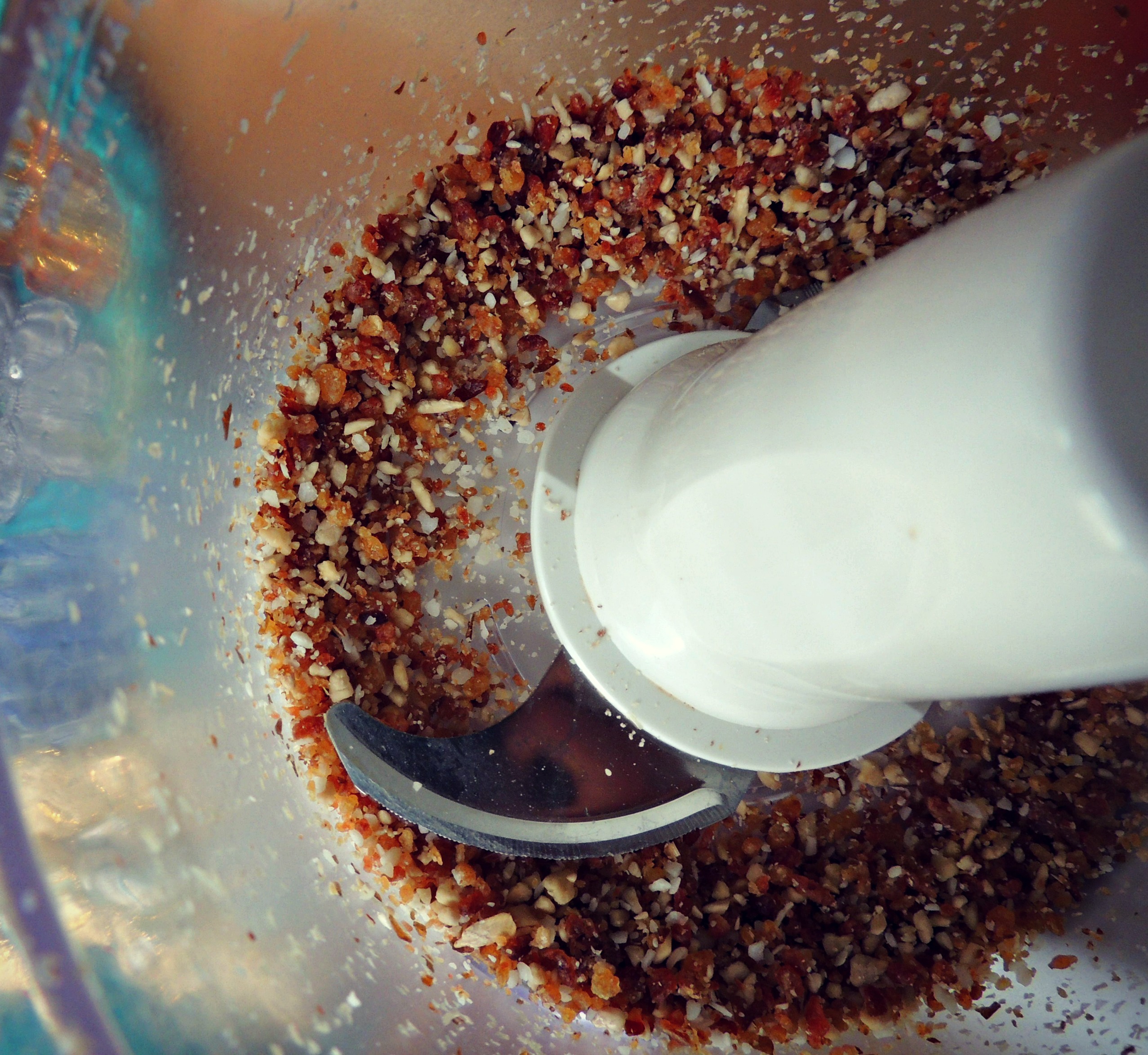
Add in the almond meal/flour, coconut flour, chocolate chips or cacao nibs, walnuts, cocoa and sweetener, if using. Mix thoroughly with a wooden spoon.
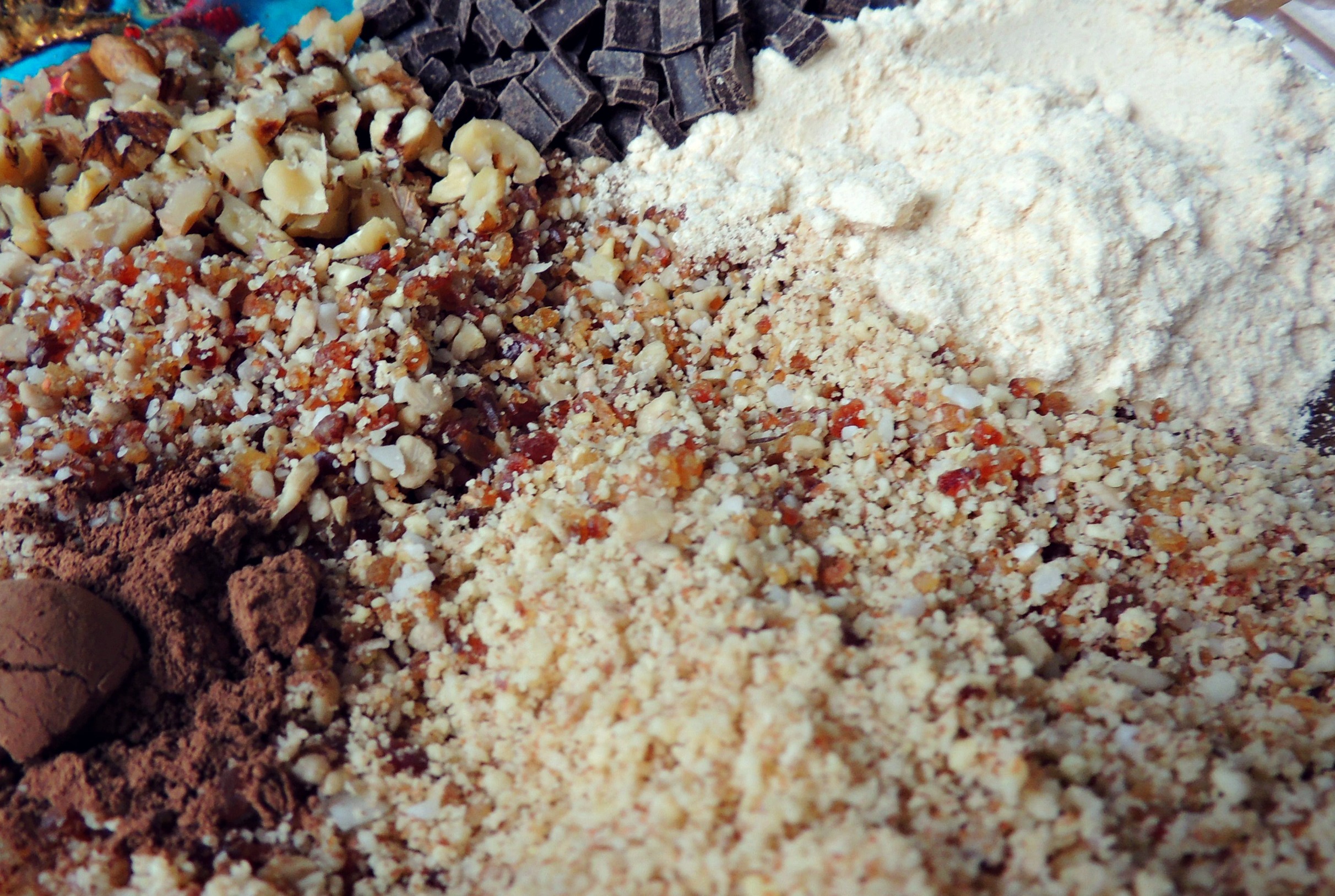
Stir in the coconut milk and almond butter, blending until evenly mixed. Batter will have a thick, dense texture.
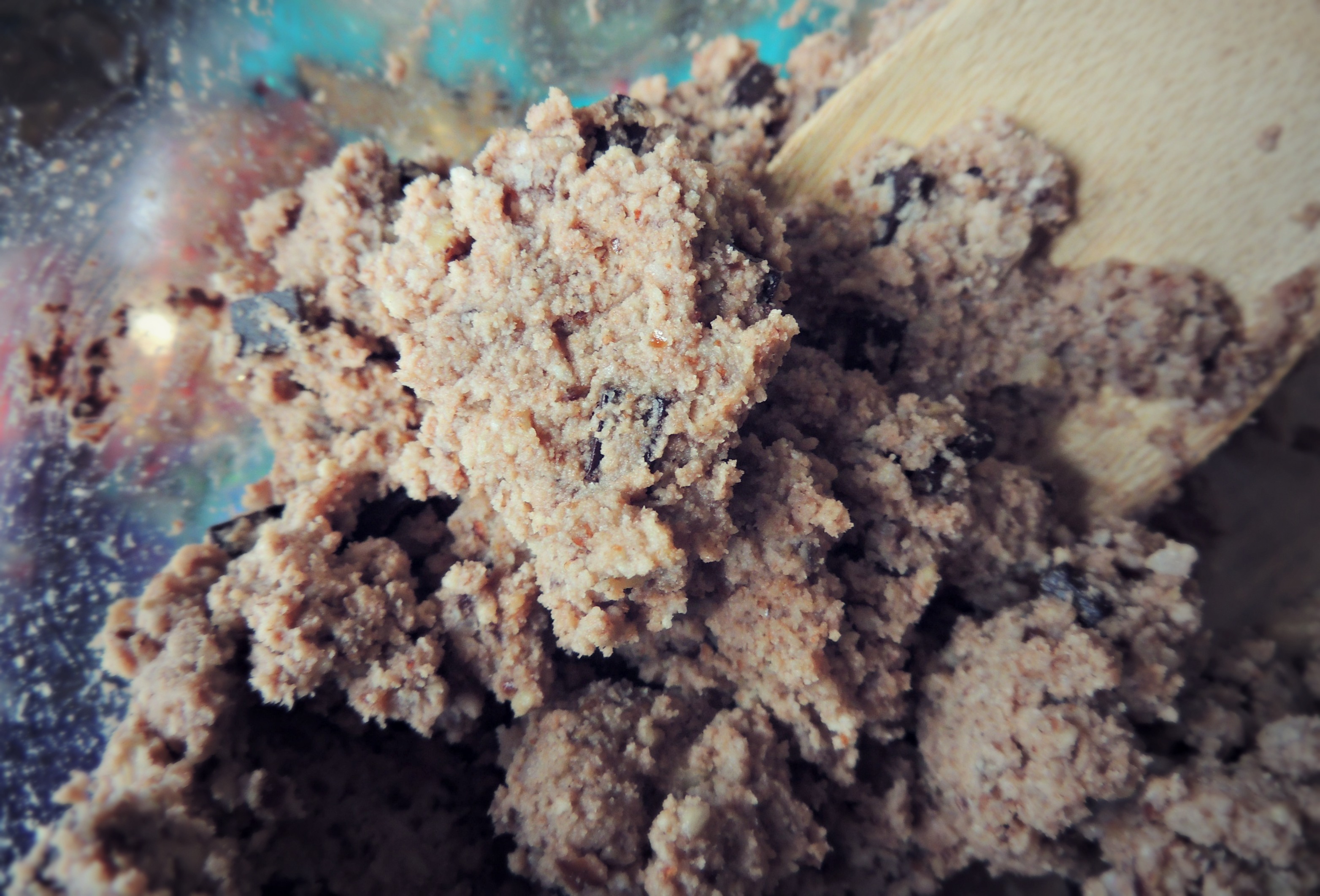
Spread into the pan and bake for about 60 minutes, or until visibly dry and firm to the touch.
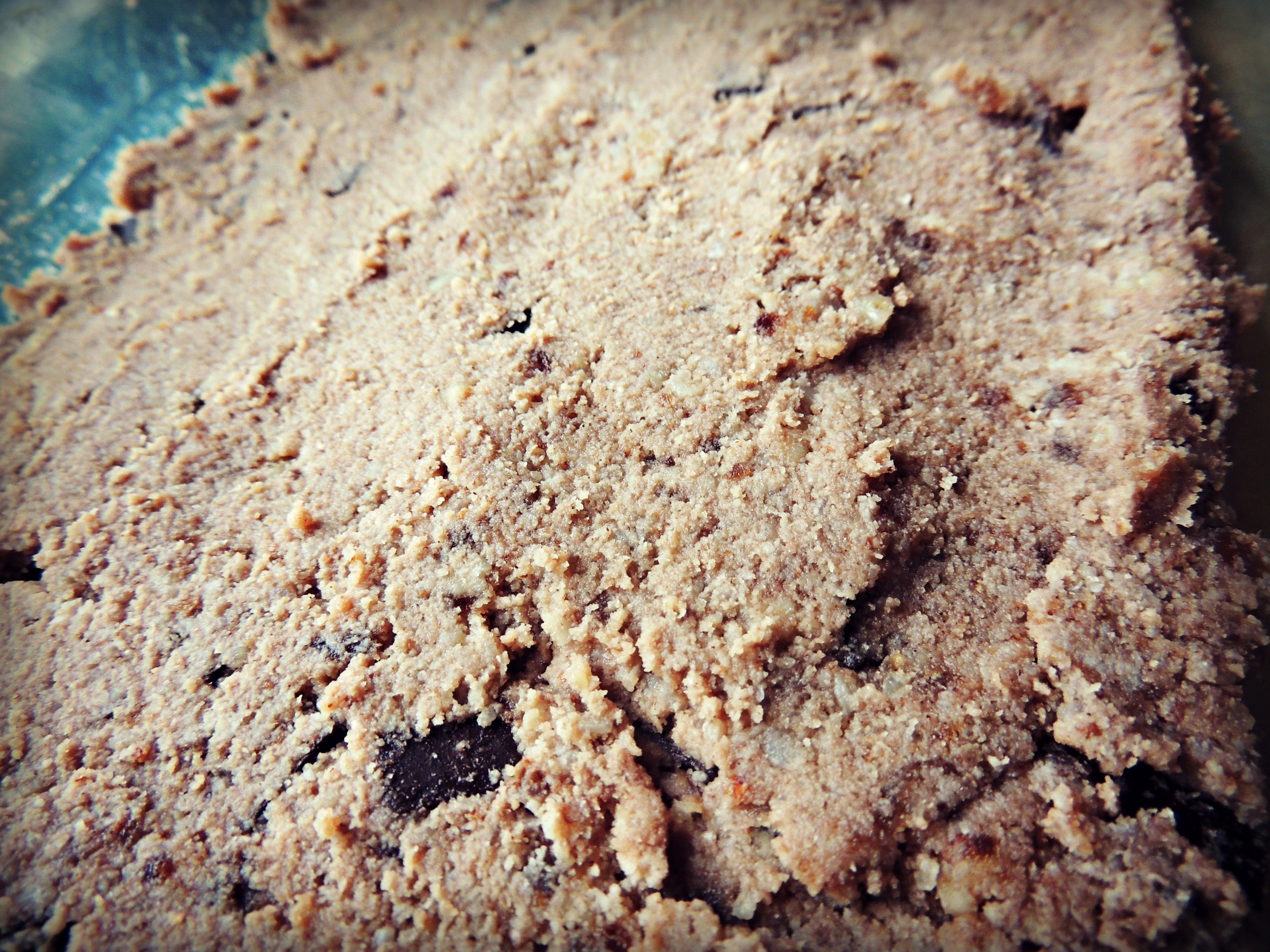
Score and slice into bars. Store in an airtight container.
Learn More
Nourishing Traditions by Sally Fallon
Dirty Secrets of the Food Industry
Wheat Belly By William Davis
Rich Food, Poor Food by Mira and Jayson Calton
